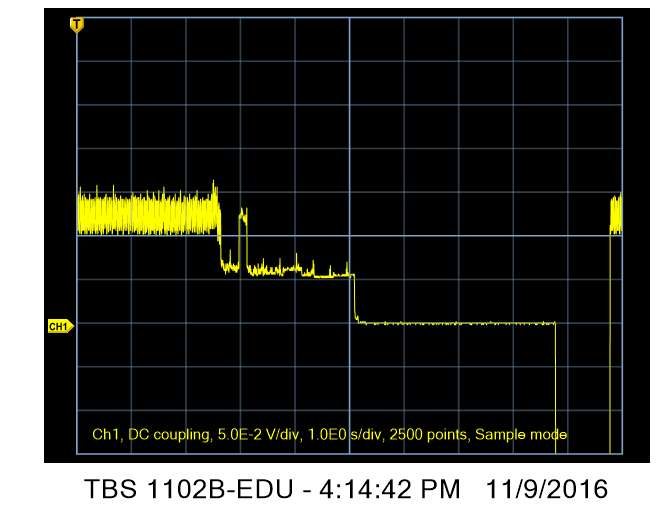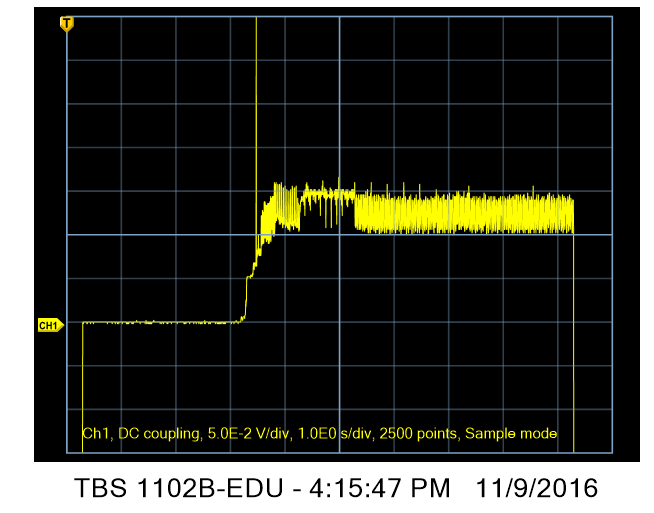This is a continuation in a series of posts on power consumption in the Sony a7RII. The more recent incarnation of the series starts here.
The fact that the a7RII takes battery current to keep the sensor centered even when IBIS is turned off got me to wondering about two things.
- Do the optically stabilized Sony lenses require power to keep the elements centered even when OSS is turned off?
- Do the voice-coil actuators that drive the focus of many Sony lenses require power to keep the lens focused at one place, even when manual focusing is enabled?
With the a7RII, you can’t sort out what current is being used by the sensor-centering circuitry, and what by the lens OSS and what by the focusing mechanism. I needed a camera that didn’t have IBIS. I found one in the a7S. (not the a7SII, which does have IBIS).
I din’t do a full analysis, but here are a few general notes on the a7S battery draw. All the traces were made with the LCD screen on.
The camera shuts down in two stages just like the a7RII, but the currents are higher: about 6 ma for the first stage, and 2.3 ma after a minute or so.
Power up is similar to, but not the same as, the a7RII:
Once powered up, the liveview readout/LCD refresh current looks like the a7RII:
Here’s the current when you trip the shutter at 1/30 second in EFCS mode.
You can see the data being crunched and written to the SD card.
I mounted a Batis 85/1.8 and turned SteadyShot on, then shook the camera gently:
You can see the correcting current. But, when I turned SteadyShot off and shook the camera, here’s what I saw:
There is also a pattern of current changes synchronized with my waving. (By the way, please ignore the glitches on the right. The camera seeems to do that randomly.)
The fact that there is current in synch with the camera motion with SteadyShot off means that the camera must expend energy just to keep the correcting elements centered, the focus in one place, or both. This is similar to the case with IBIS in the a7RII.
I mounted a Zony 35/2.8 and waved the camera with manual focus on.There is variation in current.
Since the Zony 35 doesn’t have OSS, the current variation must come from keeping the camera focus distance constant. That’a the soft underbelly of voice-coil actuated focusing.
I tried putting a third-party lens on the camera with a dumb adapter. No current fluctuation with waving.
Let’s look at autofocus current. First in AF-S mode, with a medium spot size:
There is a brief (about 1/3 second) period of high current as focus is acquired, then it drops back a bit, but still stays higher than before my finger was applied to the shutter button (just like the a7RII). The current drops when I take my finger off the shutter release.
In AF-C mode:
This is a bit surprising. The current goes up when the shutter is half-pressed, and is higher when focus is acquired and the camera is tracking it than when it’s trying to reacquire focus.









Leave a Reply